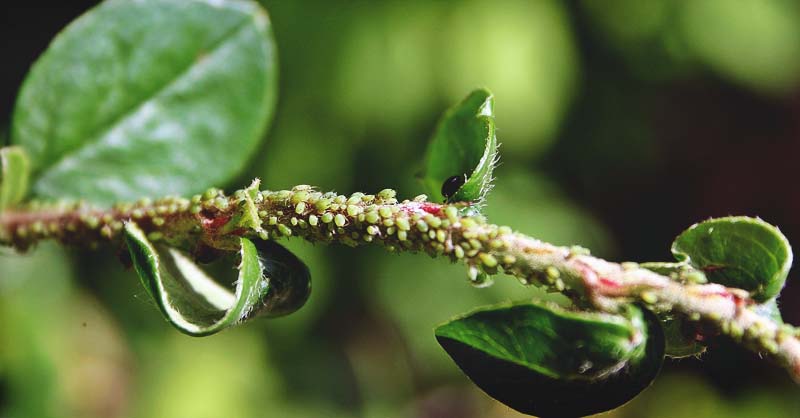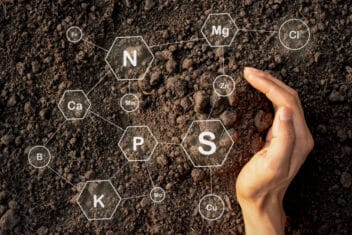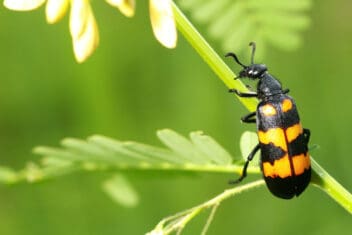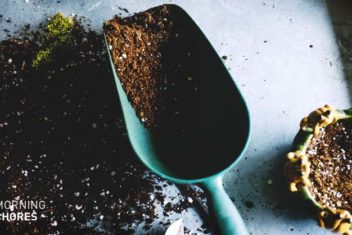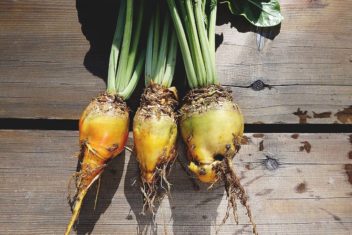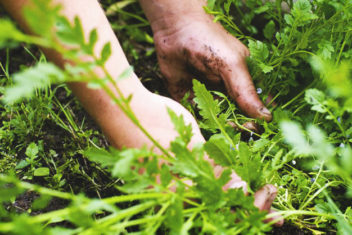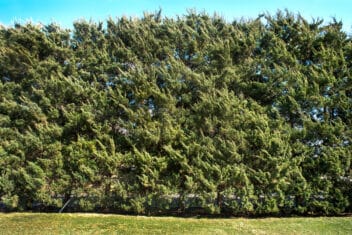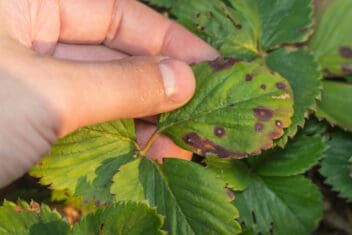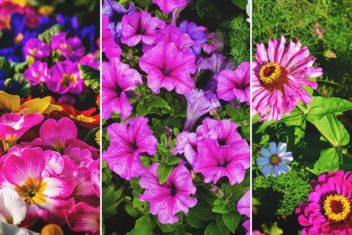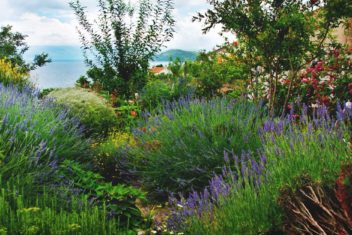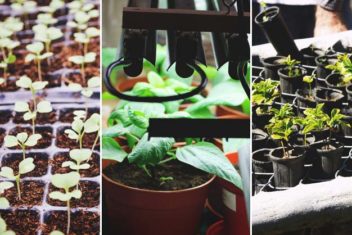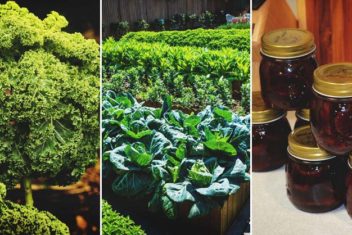It’s gardening time! Let’s all break out our gardening boots and do a happy dance!
The only downside to the gardening season is the pests which come along with it. There are many pests to be aware of, but aphids are one of the most common.
I’m going to help you learn how to spot aphids in your garden, understand their lifecycles, how you can prevent them, and how you can treat your garden if it has been infested.
There’s no time to waste. Let’s explore how you can protect your garden:
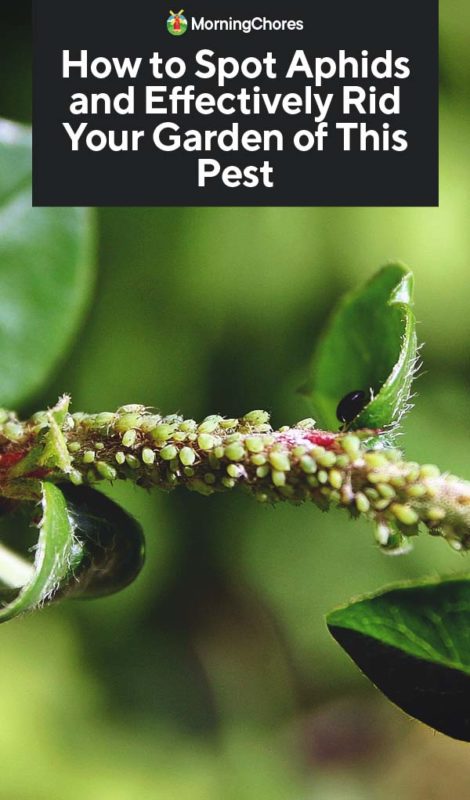
What Are Aphids?
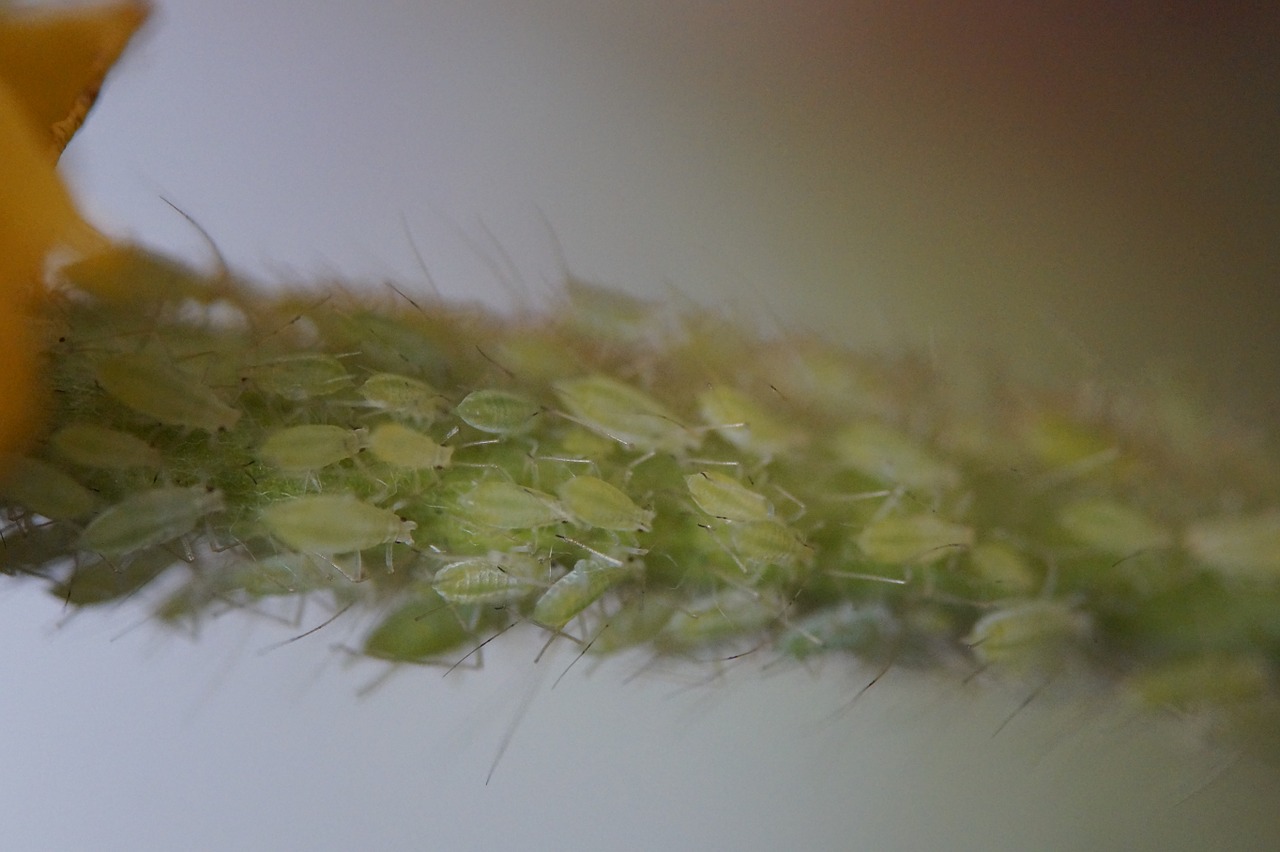
My first few years of gardening were overwhelming. I tried to recognize each pest and understand how much of a threat each one was to my garden.
Aphids are a pest gardeners in practically every zone should know about because they can survive in almost every planting zone.
They are usually small green bugs with a soft body. Different species of aphids can be a variety of colors such as white, black, gray, green, brown, and pink.
The color will let you know what they usually eat. For instance, you can have a type of aphid which only munches on beans, another eats cabbage, some eat peaches, potatoes, apples, or melons.
Other species of aphids aren’t specific and will eat anything you have in your garden.
Aphids have antennas on the front of their heads, and they have cornicles (which are two small tubes) protruding from their hindquarters.
Most aphids are smooth and have a similar feeling as a gummy worm does, but others can be hairy.
The Aphid Lifecycle
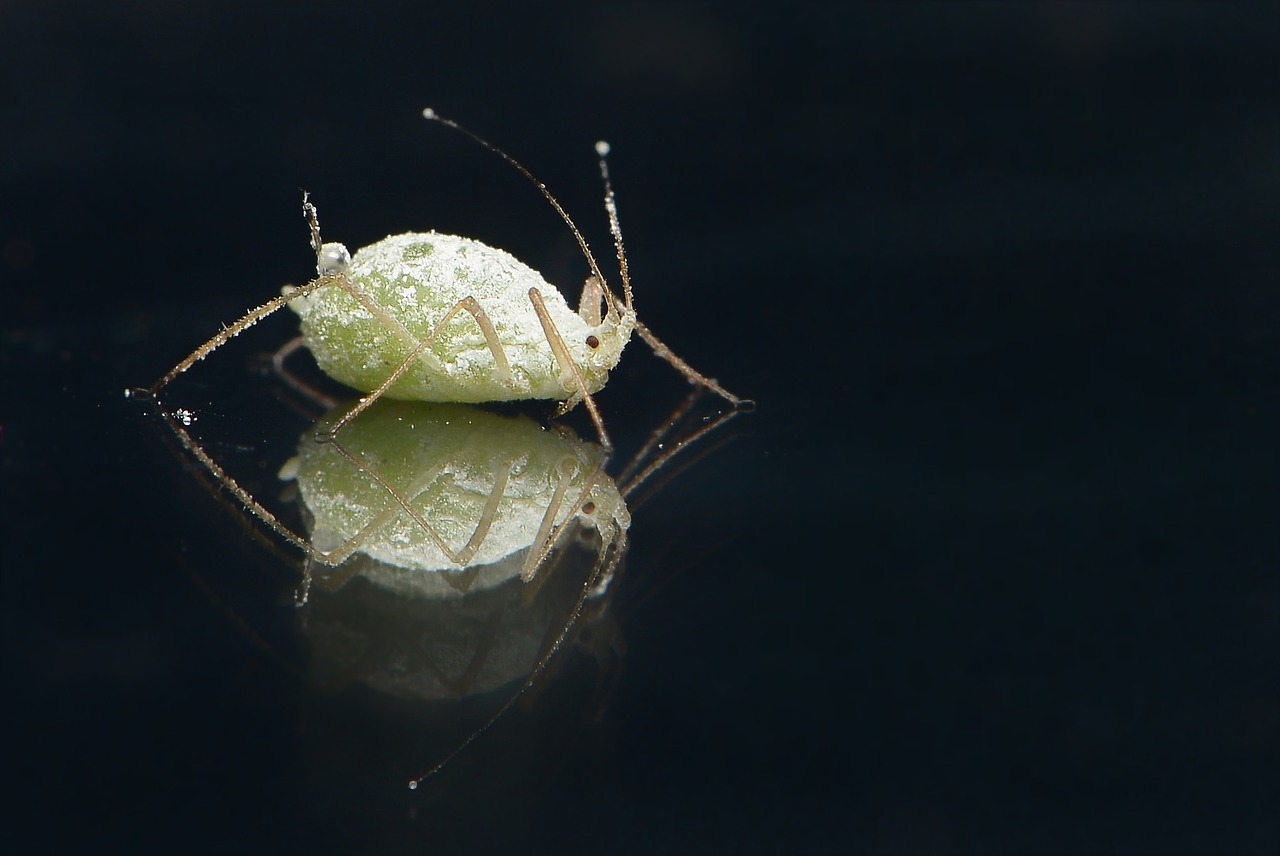
Female aphids lay their eggs in your garden during fall, and they overwinter. The mother returns in the spring and hatches the eggs.
The babies quickly grow and reproduce over and over during the growing season. You can have multiple generations of aphids hatch in your garden in one season.
Therefore, if you don’t stay on top of them, your garden can become overrun. Aphids don’t usually have wings, but they will sprout them to nest in another garden if your garden becomes too crowded.
In most cases, aphids stick close together, and it’s rare to find an aphid living alone. If you see one, chances are there are more hanging around.
Have Aphids Been Here?
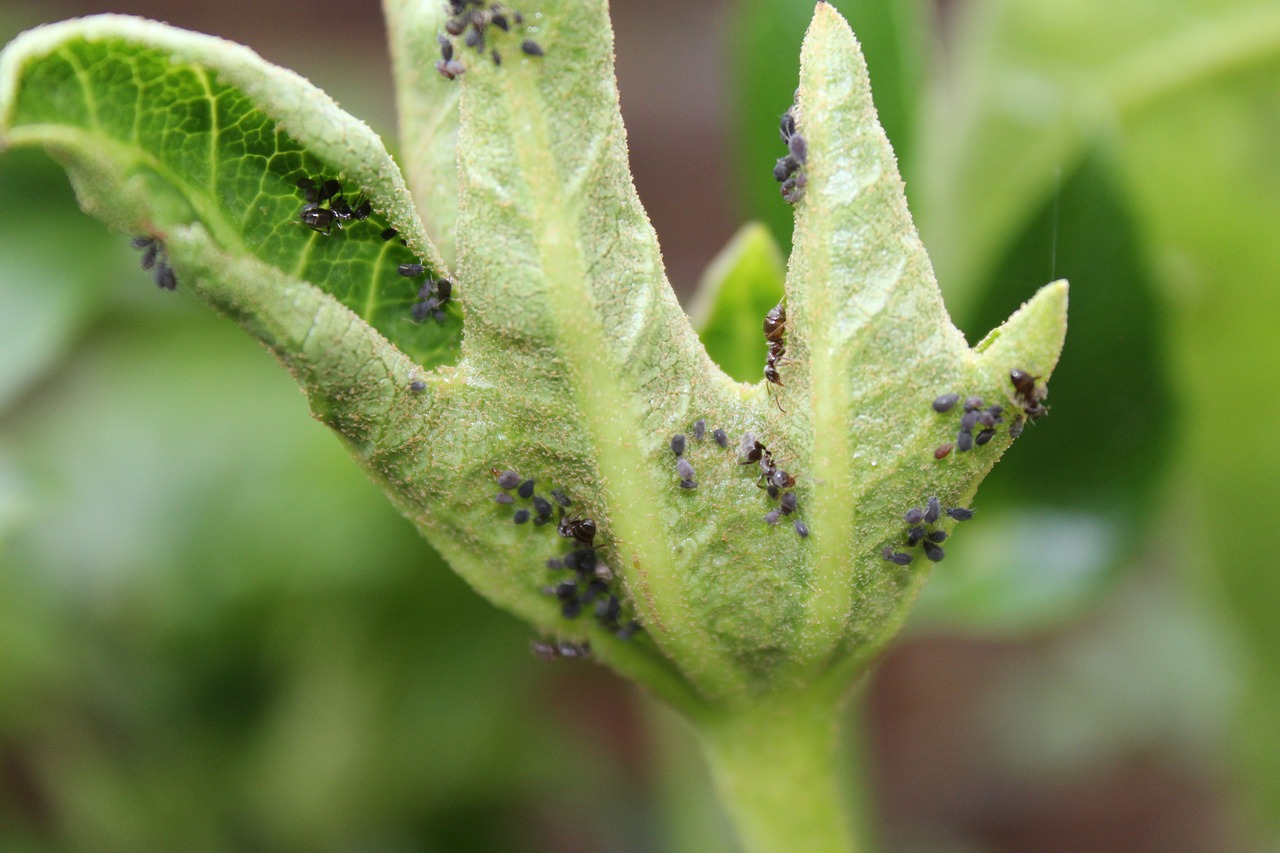
You will know when aphids have moved into your garden because of the evidence they leave behind.
The leaves on your plants may start to curl or become discolored if aphids have been sucking the juices out of them or feasting on them. They often converge on fresh new shoots and flowers, making it easy to spot them.
In addition, they leave a sticky substance on the leaves or the surface under the plant as well.
You may be able to see the aphids living on your plants if you check the underside of the leaves, and you may have a stream of ants tending to the aphids.
When your plants begin to produce, if the fruit of the plant looks deformed, it’s most likely because aphids have moved in on the plant.
If you notice your plants look weak, diseased, or have a sticky texture, begin to check your garden for aphids.
How to Prevent Aphids
Preventing aphids is easier than battling them once they’ve moved in. Take these steps early on to protect your garden:
1. Spray Your Fruit Trees
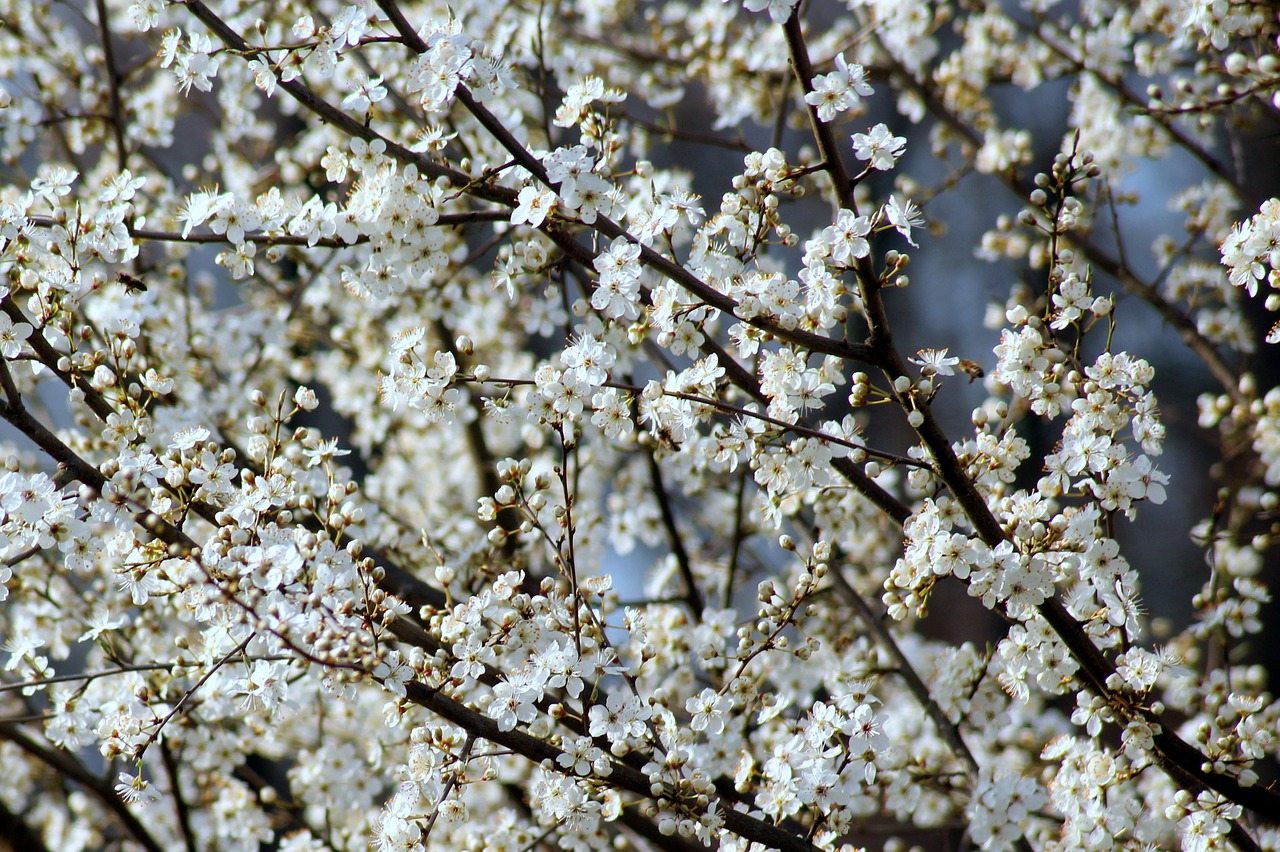
It’s common for aphids to lay their eggs in your fruit trees during the fall. The eggs will overwinter and hatch the next growing season.
This will impact your harvest tremendously. Get rid of aphids in your fruit trees by spraying them with horticultural spray before they begin to bloom and again at the end of the season.
2. Add Beneficial Insects
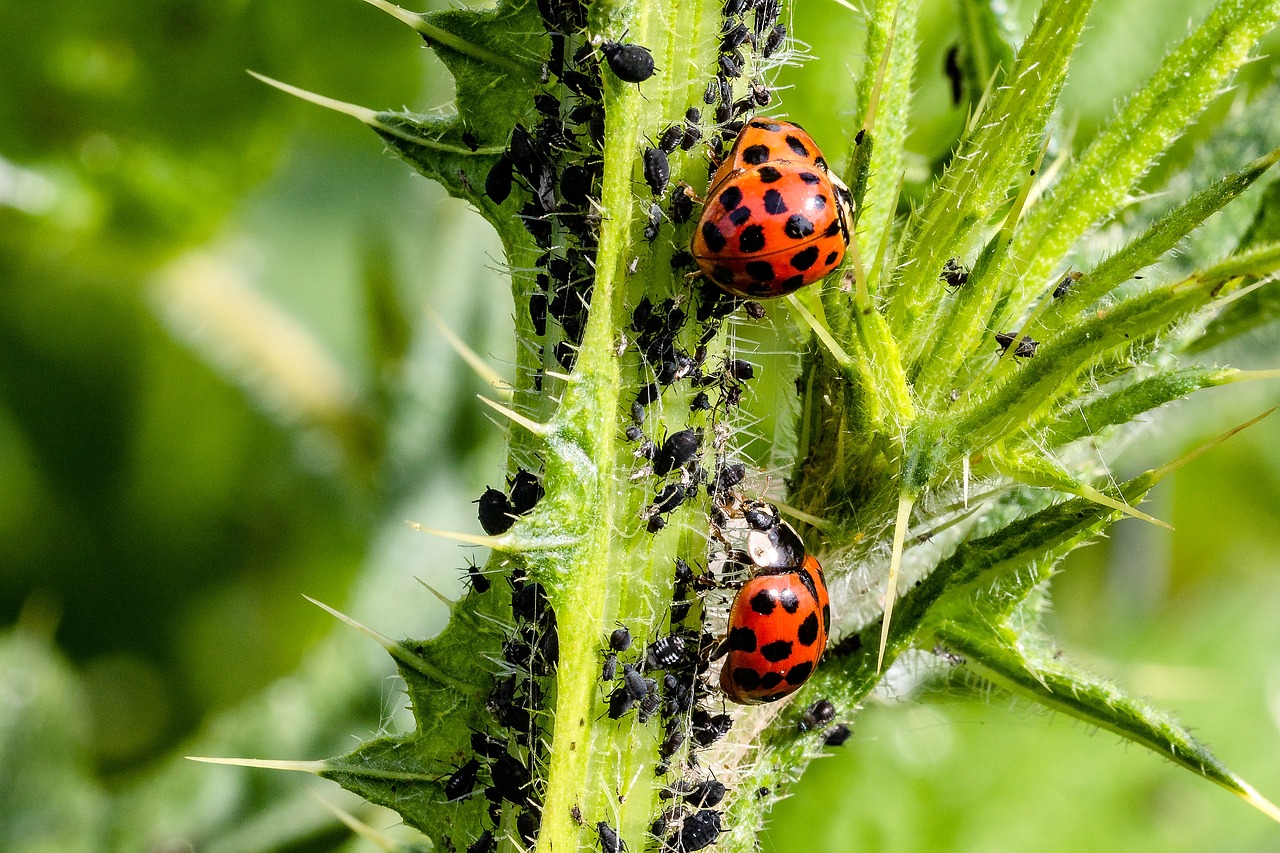
You may be under the impression all insects in your garden are a bad thing. However, all the bugs aren’t bad. There are some which can help you keep unwanted pests under control.
If you have a specific pest in your garden (such as aphids), add bugs which like to eat your pest. They will keep everything under control without added work or chemicals.
3. Companion Plant
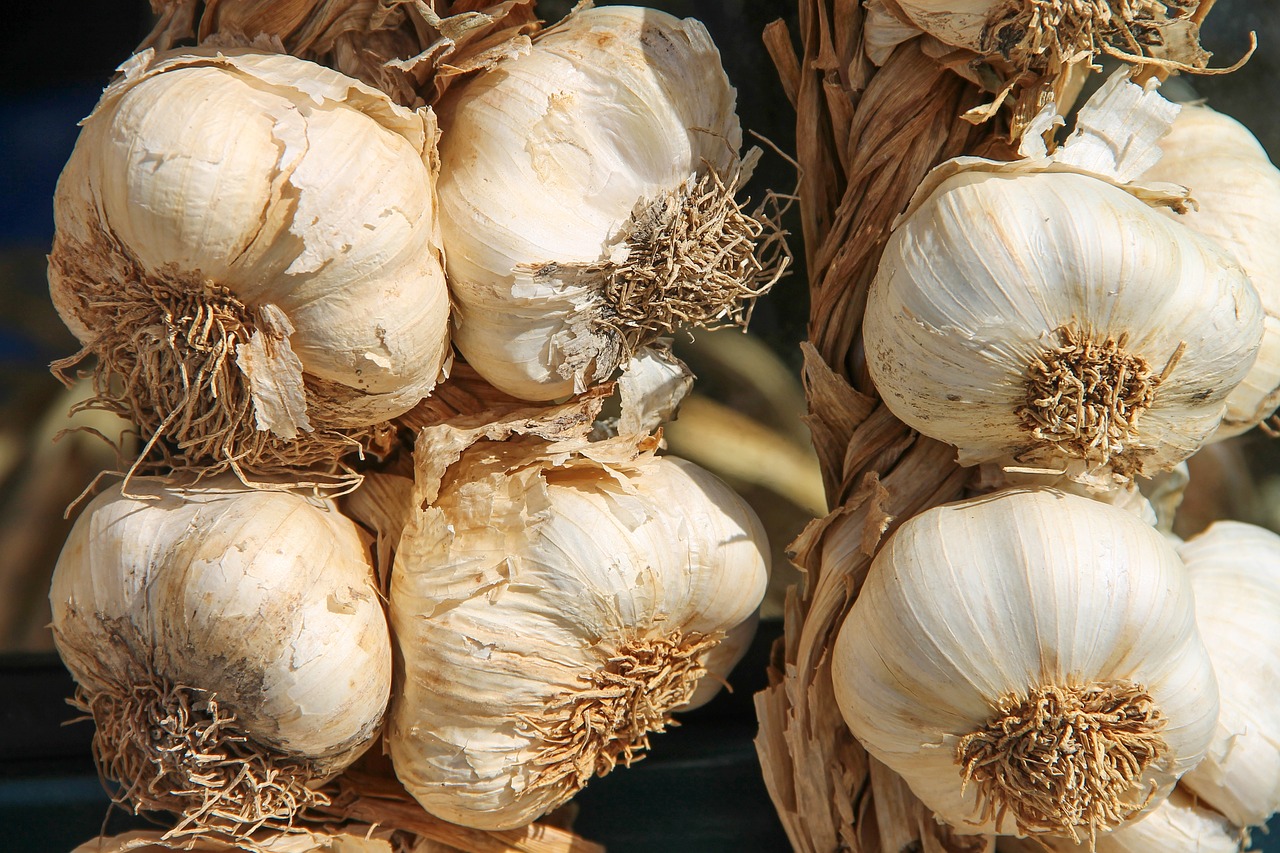
There are some plants aphids don’t like. If you have one particular plant aphids seem drawn to, plant it next to some of the plants aphids don’t like.
By companion planting, you could save your crops without lifting a finger. Some of the crops aphids don’t like are catnip, garlic, and chives.
How to Treat Your Garden for an Aphid Infestation
You’ve prepared your garden as best as you could. It was cleaned out during the fall to prevent bugs and eggs from overwintering, you’ve companion planted, added beneficial bugs, and sprayed prior to the growing season.
Still, aphids found their way into your garden. Don’t panic because there are still methods to manage aphids once they’ve moved in:
1. Spot Them Early
Defeating aphids in your garden will depend a great deal on when you spot them. If you catch them when there are fewer, you have a greater chance of getting things under control.
However, if you let them multiply, you’ll have a much larger fight on your hands. Catching them early is the first step in making progress.
2. Look at the Age of the Plant
If you have aphids on your younger plants, you must jump into action quickly. Aphids suck the juice from inside your plants.
The older the plant, the stronger it is and more established. This makes them able to withstand more. Younger plants can be killed easier by aphid activity.
3. Give Them a Cold Shower
My favorite way to defeat aphids is to take out my aggression on them. When I’m watering my garden, and I see them on my plants, I use my water hose to defend my garden.
A hard spray of cold water on the plants should be enough to dislodge the aphids from the plant. Chances are, the aphids won’t return to the same plant.
4. Add a Little Flour
When water fails, flour is your next best option. If you have a large infestation of aphids, this may be your best bet as well.
Sprinkle flour all over your crops. The flour will suffocate the aphids and as a result, they’ll die. Flour is an inexpensive way to protect your garden from the pest which has set out to destroy it.
5. Oils and Soaps Can Help
If you’d like to purchase an option to protect your garden from aphids, consider buying the following:
- Neem oil
- Insecticides
- Horticultural soap
6. A Little Dishwater
If the cold water didn’t blast all the aphids away, consider coming back with a little dishwater to get the job done.
You can mix water with dish soap and spray your plants. It won’t hurt your plants or their fruits, but it will cause the aphids to dislodge themselves from the plants.
7. Diatomaceous Earth
You can sprinkle diatomaceous earth all over your crops. This is another natural option to defeat aphids in your garden.
Be sure to only use DE when your plants aren’t blooming because the DE can also kill bees which are pollinating your plants.
8. Get Rid of Ants
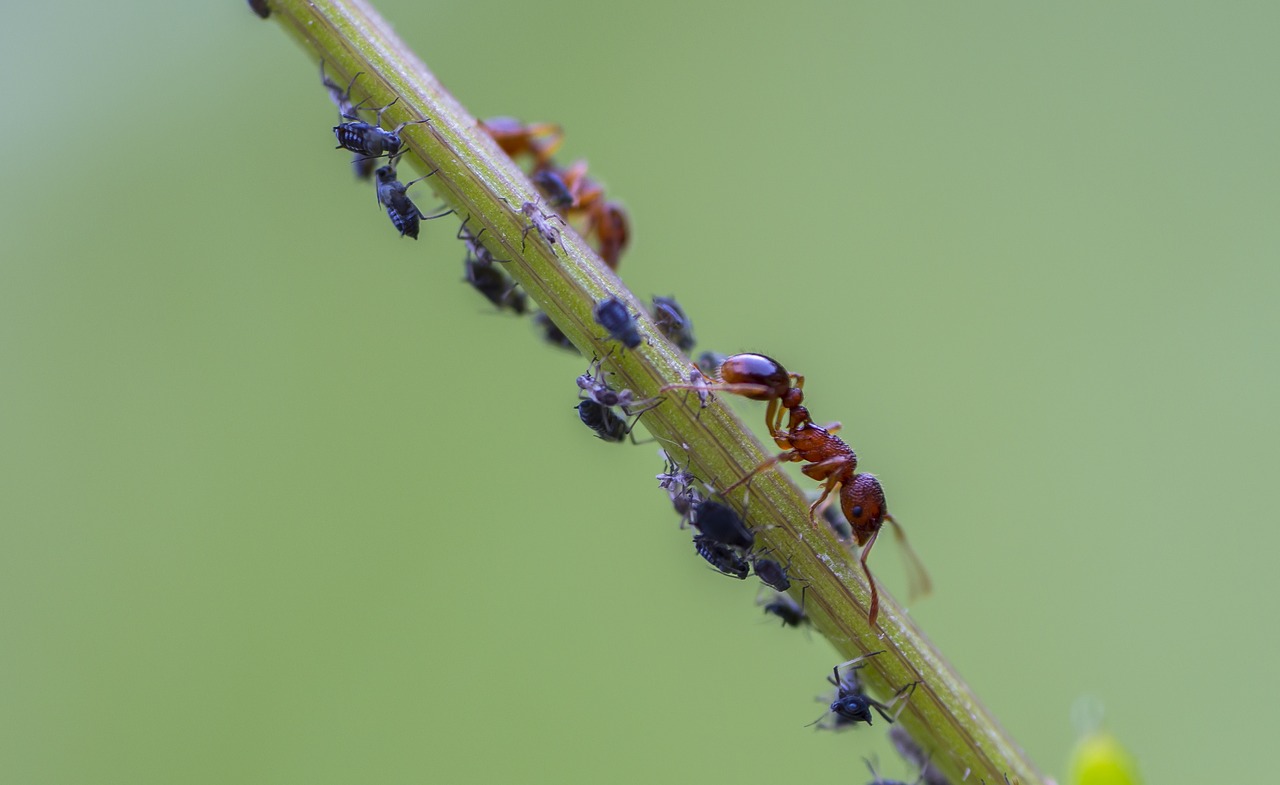
Ants and aphids have a symbiotic relationship. The aphids leave a honeydew substance on the plants from where they suck their juice.
The ants thrive off of this substance and will protect the aphids since they recognize them as a means for their survival. Ants will bring aphids into their nests at night to protect them from other enemies.
Therefore, if you get rid of ants, aphids lose their ‘bodyguards.’ Get rid of ants by sprinkling artificial sweetener, cinnamon, or cayenne pepper around your garden.
Artificial sweeteners are toxic to ants, and the spices apparently turn the ants off from the area.
You can also sprinkle diatomaceous earth around your plants. This will slice through the ants and kill them off.
Aphids are interesting creatures which can wreak havoc on your garden if allowed to flourish. Instead, they must be closely monitored and dealt with immediately.
By recognizing aphids, understanding how they feed on your plants, how to stay ahead of them, or rid your garden once they’ve moved in, it could save your gardening efforts.
Hopefully, this information will help you have a beautiful and thriving garden this year and for years to come.

